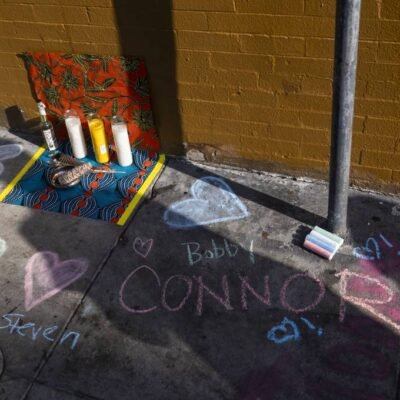I’m going to marry a Jewish woman because I like the idea of getting up Sunday morning and going to the deli. – Michael J. Fox
As destiny would have it, Michael J. Fox did indeed marry a Jewish woman and, one assumes, has happily enjoyed Sunday morning deli excursions ever since.
Rivaling the synagogue and the Jewish Community Center as a gathering place for Jewish (and other) communities, the Jewish deli, aka kosher deli, aka kosher-style deli, is now getting its due, honored with a traveling exhibit, curated by the Skirball Cultural Center in Los Angeles.
Titled “I’ll Have What She’s Having,”—the famous line from “When Harry Met Sally” (and if you’re unfamiliar with it, you’d better google it as I’m certainly not going to tell you)—is at once a celebration of Jewish food from shtetl to suburbia and a history of that ubiquitous phenomenon known as the Jewish delicatessen, the hub for casual dining in an atmosphere as salty, pickly and spicy as its menu items.
The exhibit features store signs, menus, advertisements, fixtures, historical footage, film and television clips, and artifacts that illuminate how delicatessens evolved from specialty stores catering to immigrant populations into the beloved national institutions they are today.
“Delicatessen is a fusion food born of immigration,” says Cate Thurston, chief curator at the Skirball. “This influx of people created, through combining foodways, a beloved American tradition that is an important part of Jewish American culture.”
And not just Jewish American culture. The deli, unknown until the latter half of the 19th century, and its cuisine—pastrami on rye, cheesecake, bagel with a shmear of cream cheese (or maybe two shmears this time, Bernie) lox, latkes, Ruebens, egg creams and a host of other foods—have become American staples in real life as well as on the big and little screens.
“Seinfeld,” the aforementioned “When Harry Met Sally,” “Law and Order,” “I Love Lucy,” “My Favorite Year,” and myriad others have had scenes filmed in or around a deli.
Visitors to the exhibit are treated to a smorgasbord of historic delights. To those who’ve been around for more than three generations, “I’ll Have What She’s Having” is an especially sweet (as well as sour, tart and peppery) trip down memory lane.
There’s a sepia-tinted film of Lower East Side bakers explaining the proper technique—complete with accents—for making the perfect bagel.
There are specially commissioned sculptures immortalizing the more beloved sandwiches—although a catastrophe was narrowly avoided days before the exhibit opened in Washington, DC. “The yellow mustard with the pastrami sandwich looked too much like cheese,” says Thurston. (Cheese on pastrami is not kosher.) “Our preparator team was out there with an X-Acto knife a couple of days before the exhibition first opened.”
And there are those overstuffed menus—some as long as a novella—with simply too many choices and whole sections devoted to salami sandwiches, omelets and other items that at another restaurant would only merit one line, but at an authentic Jewish deli are entire categories in themselves.
The curators wisely cover what’s on both sides of the counter—the food, the customers, the characters who run the delis. “You have these spaces that are just alive with people and food and talking and movement,” Thurston says.
There’s what these businesses meant to their communities as places where recently arrived immigrants could hear a familiar accent or taste a familiar dish for an hour or more. Many Ashkenazi Jewish immigrants from Central and Eastern Europe moved to the United States and, along with their belongings, also brought their memories of home and the recipes of their regional dishes.
Later, Holocaust survivors both frequented delis and sometimes ran their own. In the North Hollywood Jewish enclave on Burbank Boulevard where I used to live, a Holocaust survivor ran the only strictly kosher pizza parlor and deli in town. A warm and welcoming elderly lady, she was well known and loved, and we visited her deli—as did many of our neighbors—more for her than for the food.
Admittedly, the number of Jewish delis and restaurants in the United States has declined dramatically since its mid-century peak, but Thurston doesn’t believe they’ll ever go away. “That thread of delis as a home away from home hasn’t changed, even if delis may look a little different in the 21st century,” he says.
Permit me one reminiscence. I recall my dad taking me to the venerable deli—Katz’s—a New York institution (as it still is) since 1888. I couldn’t have been more than eight. The waiter asked me what I wanted. “Cinnamon toast,” I said.
He exploded. “Cinnamon toast! You want cinnamon toast!?? You know what we do? We make the toast, and then we put cinnamon on it! And for THAT we charge your Pop AN EXTRA FIFTEEN CENTS!! You think he’s MADE of money??! You’re ordering TOAST! Plain TOAST! With cinnamon on the side so you can put it on YOURSELF!”
He walked off, muttering, “Cinnamon toast!”
Image credits: The Langer’s Pastrami Platter by Ben Brown from Austin, TX, USA. CC BY-SA 2.0, via Wikimedia Commons.




